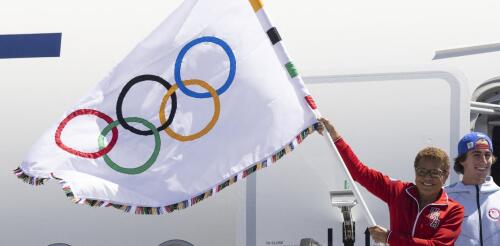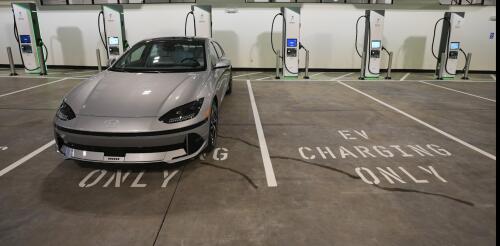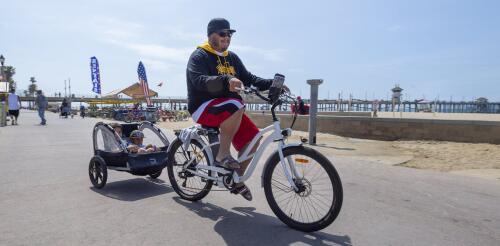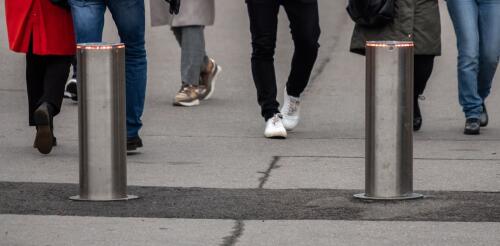Transportation
With the Olympic torch extinguished in Paris, all eyes are turning to Los Angeles for the 2028 Olympics. The host city has promised that the next Summer Games will be “car-free.” For people who know Los Angeles, this seems overly optimistic. The car remains king in LA, despite growing public transit options. When LA hosted the Games in 1932, it had an extensive public transportation system, with buses and an extensive network of electric streetcars. Today, the trolleys are long gone; riders say city buses don’t come on schedule, and bus stops are dirty. What happened? This question fascinates me because I am a business professor who studies why society abandons and then sometimes returns to certain technologies, such as vinyl records, landline phones and metal coins. The demise of electric streetcars in Los Angeles and attempts to bring them back today vividly demonstrate the costs and challenges of such revivals. The 2028 Olympi...
The Northeast corridor is America’s busiest rail line. Each day, its trains deliver 800,000 passengers to Boston, New York, Philadelphia, Washington and points in between. The Northeast corridor is also a name for the place those trains serve: the coastal plain stretching from Virginia to Massachusetts, where over 17% of the country’s population lives on less than 2% of its land. Northeasterners ride the corridor and live there too. Like “Rust Belt,” “Deep South,” “Silicon Valley” and “Appalachia,” “Corridor” has become shorthand for what many people think of as the Northeast’s defining features: its brisk pace of life, high median incomes and liberal politics. In 1961, Republican Sen. Barry Goldwater of Arizona wished someone had “sawed off the Eastern Seaboard and let it float out to sea.” In 2016, conservative F.H. Buckley disparaged “lawyers, academics, trust-fund babies and high...
The U.S. Environmental Protection Agency released strict new emissions limits on March 20, 2024, for cars built from 2027 through 2032. The final rule for Multi-Pollutant Emissions Standards caps a process that started almost a year earlier, when the Biden administration first proposed groundbreaking regulations that would essentially require automakers to make a substantial pivot toward electrification. The original proposal met significant pushback from carmakers and unions, who argued that the industry needed more time to switch from gas-powered cars to EVs. As a result, while the final target that this rule sets is very similar to the one that was initially proposed, the timetable in the final rule – especially in the earlier years – is relatively relaxed. That means more carbon emissions in the short run. Politics is inevitably an important consideration in regulating major industries. The new rule is projected to cut carbon dioxide emissions from passenger ca...
E-bikes have captured widespread attention across the U.S., and for good reason. They are the most energy-efficient way to move from place to place, providing exercise in the process, and offer enough assistance while pedaling uphill or into headwinds to make them usable for many types of riders. Greenhouse gas emissions from e-bikes are much lower than those from either gasoline-powered or electric cars. Some cities and states are encouraging the use of e-bikes by providing purchase incentives, often drawing on public funds dedicated to curbing climate change. Currently, over 100 cities and states have or plan to launch e-bike incentive programs, most funded by energy or environment initiatives. However, there has been little research on the effectiveness of these types of programs, how to design them or how to define goals. We study transportation from many angles, including innovation, sustainability and economics. Our new study, published in the journal Transportation Res...
Deadly traffic incidents have declined in most developed countries in recent years. But in the U.S. they’re becoming more common. Deaths in motor vehicle crashes rose more than 33% from 2011 to 2021. Since 2010, pedestrian deaths nationwide have climbed a shocking 77%, compared with a 25% increase in all other types of traffic fatalities. Light trucks injure pedestrians more severely than passenger cars in crashes, and the size of cars and trucks sold in the U.S. continues to swell. Some current models, such as the Toyota Rav4, are one-third larger than they were 15 years ago. Based on my experience researching urban planning and street design for the past three decades, I know that U.S. cities are primarily vehicle-centered rather than human-centered. Rules established in the 1920s govern how people use vehicles in public streets, and other governmental controls tell manufacturers how big those vehicles can be. Today, these sets of rules have created public spaces w...




